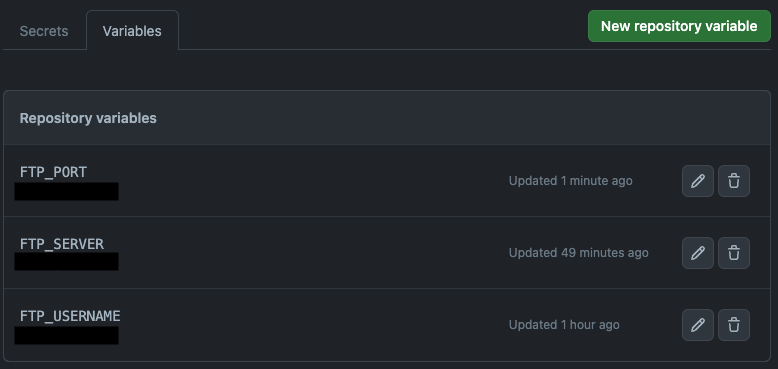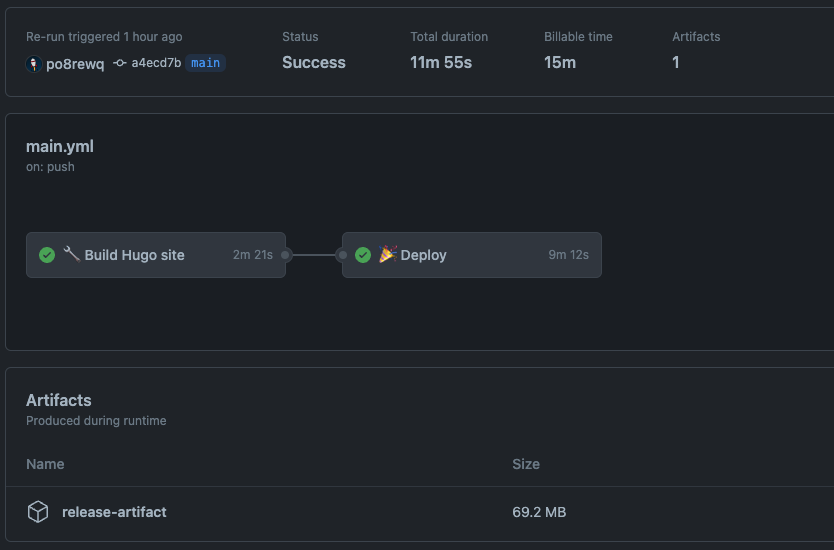Introduction
Nowadays, it never has been easier to build and host a website for having any form of online presence. You don’t even need a lot of web development knowledge. There are many tools and resources available that make the process easier than ever. One such tool is Hugo, a fast and flexible static site generator that allows users to create websites quickly and easily. In addition, deploying a Hugo site to a web server can be made even simpler through the use of Github Actions (assuming your code is hosted on github), a powerful automation tool that can be used to automatically deploy a website to a FTP server. In this article, we’ll explore how to use Hugo to build a website and then deploy it to a FTP server using Github Actions, providing a step-by-step guide for those looking to get their website up and running quickly and efficiently.
Github actions
Github actions is a great tool to automate your workflow. It is free for repositories (with some limitations on private repositories) and you can use it to build, test and deploy your code.
Setting up the environment variables
You need to set up some environment variables in your repository. You can do this by going to Settings > Secrets & Variables > Actions in your Github repository (under Security).
You need to set up the following variables:


Creating the workflow
Now that we have the environment variables set up, we can create the workflow. You can create a file called main.yml in the .github/workflows folder in your repository.
The workflow consists of two jobs: “build” and “deploy”. The “build” job builds the hugo site and the “deploy” job deploys the site to the FTP server.
1
2
3
4
5
6
7
8
9
10
11
12
13
14
15
16
17
18
19
20
21
22
23
24
25
26
27
28
29
30
31
32
33
34
35
36
37
38
39
40
41
42
43
44
45
46
47
48
49
50
51
52
53
54
55
56
57
58
59
60
61
62
63
64
65
66
67
68
69
70
71
72
73
74
75
76
77
78
79
80
81
| name: 🚀 Deploy to prod
# Will trigger the workflow on each push to the main branch
on:
push:
branches:
- main
# Allows you to run this workflow manually from the Actions tab
workflow_dispatch:
jobs:
# The first job will build the hugo site and upload the artifact
build:
name: 🔧 Build Hugo site
runs-on: ubuntu-latest
env:
HUGO_VERSION: 0.111.2
steps:
- name: Install Hugo CLI
run: |
wget -O ${{ runner.temp }}/hugo.deb https://github.com/gohugoio/hugo/releases/download/v${HUGO_VERSION}/hugo_extended_${HUGO_VERSION}_linux-amd64.deb \
&& sudo dpkg -i ${{ runner.temp }}/hugo.deb
- name: Install Dart Sass Embedded
run: sudo snap install dart-sass-embedded
- name: Checkout
uses: actions/checkout@v3
with:
submodules: recursive
fetch-depth: 0
- name: Install Node.js dependencies
run: '[[ -f package-lock.json || -f npm-shrinkwrap.json ]] && npm ci || true'
- name: Build with Hugo
env:
# For maximum backward compatibility with Hugo modules
HUGO_ENVIRONMENT: production
HUGO_ENV: production
run: |
hugo \
--gc \
--minify
# We save the result as an artificat so we can use it in the next job
- name: Upload artifact
uses: actions/upload-artifact@v3
with:
name: release-artifact
path: './public'
# The second job will deploy the site to the FTP server using the artifact from the first job
deploy:
name: 🎉 Deploy
runs-on: ubuntu-latest
needs: build
steps:
- name: Checkout
uses: actions/checkout@v3
# Download the artifact we just created
- name: Download artifact
uses: actions/download-artifact@v3
with:
name: release-artifact
path: './public' # This is the path where the artifact will be downloaded to
- name: Deploy file
uses: wlixcc/SFTP-Deploy-Action@v1.2.4
with:
server: ${{ vars.ftp_server }}
username: ${{ vars.ftp_username }}
ssh_private_key: ${{ secrets.ftp_password }}
# or if you only use a password
# sftp_only: true
# password: ${{ secrets.ftp_password }}
port: ${{ vars.ftp_port }}
remote_path: '/var/www/app' # This will depend on your server
local_path: './public/*' # This is the path where the artifact is located
|
Now you only need to commit and push your changes to the main branch and the workflow will be triggered.

Sources:
Other alternatives
You can deploy your hugo site to a lot of other services like Netlify, Vercel, Render, etc. You can find a list of all the services here.



